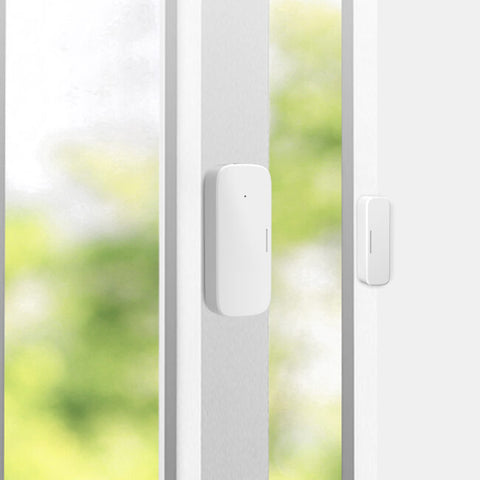If you have a Security System or a Smart Home, chances are, you've had a few false alarms.
It’s embarrassing. I know, but every once in a while you just forget you have a security system.
Maybe you ran out the front door to catch the garbage man and forgot to disarm the system or maybe you forgot to disarm the system before having coffee on the back patio. Either way, the alarm goes off and the police shows up at you r house. Usually, this isn't a big deal. But if they have been to your house or business so many times that you're on a first-name basis with the officers, you'll probably be earning yourself a fine from the police department pretty soon.
If this sounds like you, don't worry. Below are 4 reasons for false alarms and 4 easy steps to ensure you never have to deal with them again.
1.False Alarm Reason: User Error
User error accounts for the vast majority of false alarms according to the False Alarm Reduction Association (FARA) The best way to combat user error is to have a basic understanding of what a security system is and how to use it properly.

How to Prevent User Error:
User error is best solved by understanding every aspect of your security system. Below is a list of terms and their definitions that anyone who owns a security system must know.
- Interior devices - Devices that monitor activity within the perimeter of the home or business.
- Perimeter devices - Devices that monitor the perimeter of the home or business.
- Entry Delay -The amount of time you have to disarm the system once a perimeter device is activated.
- Passive Infrared Sensor (PIR) - Motion sensors that use infrared sensors as well as motion sensors.
- Wireless vs Prewired Sensors - Sensors that send signals to the control panel wirelessly or sensors that send signals to the control panel through connected wires.
- Monitoring Station - The service or company that receives the alarm signals from your home or office security system.
Friendly Tips: This is not a comprehensive list by any means but it's a start. And unfortunately, all education in the world can't help you if you don't remember the pass code.
Make sure the code you have chosen is easy for you and your family or colleagues to remember but hard for others to guess. The reason it needs to be easy to remember is that false alarms cause the siren to activate. Sirens are extremely loud and most often found inside the control panel so it will be blaring right in your face making it hard to think when trying to disarm the system. The easier the code, the more likely you will be able to successfully deactivate the alarm.
Summary: Learn about YOUR system and make sure you KNOW your code.
2.False Alarm Reason: Low Batteries
More and more homes are relying on wireless security systems and smart home devices. They are easier and cheaper to install and wireless components are required for many smart home systems. The problem is that eventually, the batteries in the sensors will run out and that will cause a false alarm.

How to Prevent Low Batteries:
Make a note to check the batteries in your sensors every year and replace them every two years.
Pro Tip: Make sure you call the monitoring station before changing batteries. Wireless sensors have tamper switches on them and will set off the alarm if the sensor is opened. The monitoring station can place your system in test mode for a few hours to give you time to change batteries.
3.False Alarm Reason: Pets or other random moving objects
These false alarms will come from your interior sensors, most likely, motion sensors. The majority of motion sensors installed in homes and businesses are Passive Infrared Motion Sensors. This means that the motion sensor is looking for two things:
Movement and a Heat Signature. If it sees something move without a heat signature. it will NOT set off the alarm. If it sees a heat signature but no movement. it will NOT set off the alarm. But if it sees movement WITH a heat signature, it will set off the alarm every time.

How to Prevent Pet and Random Object False Alarms:
Pets:
This one can be tricky especially when it comes to pets. Pets move around during the day and night and have a heat signature so they are perfect candidates for triggering false alarms. Consider the following ideas:
- Put your pet in a kennel. This isn't my favorite thing in the world but it keeps the pet in one place throughout the day or night
- Keep your pet in one room or area of the house. This is better than the first option but still, you are limiting your pet's ability to roam around.
- Use Pet Immune motion sensors. Some motion sensors have pet immunity settings. These can be set by a qualified alarm technician at the time of installation.
- Use Glass Break Sensors instead of Motion Sensors. Glass break sensors listen for loud sounds and the pitch of glass breaking to trigger an alarm. This option in my opinion is not as reliable as motion sensors but if your pets are just not controllable, this is a solid alternative.
Pro Tip: Pet immune motion sensors aren't always pet immune! These types of motion sensors basically detect anything above a certain height from the floor. For example, if the sensor has a 0-20 lb setting, it will assume a dog of 20 lbs will be about 1-2 feet tall and will not trigger an alarm if it sees any movement BELOW 2 feet from the floor. If the sensor has a 20-50 lb setting, it will assume a dog of 50 lbs will be about 2- 3 feet tall and will not trigger an alarm if it sees movement BLEOW 3 feet from the floor.
That's all fine and dandy but what if you have a 5 lb cat that jumps up on the table? Or what if your tiny dog jumps up on the couch? Both of these scenarios put the animal above 2-3 feet from the ground so a false alarm will be triggered.
And what if your cat or dog runs up the stairs? The motion sensor will only see something with a heat signature moving above 2-3 feet from the floor and will trigger an alarm.
To solve these problems. the motion sensor will need to be installed in an area so that it is not aiming up any stairs or away from areas where animals can be up on high objects.
Random Objects:
Random objects include things like plants, drapes, balloons. etc. But these objects don't have heat signatures so you should be good, right?
Not necessarily.
In the cooler months, the furnace will blow heated air th rough vents on the floor or the ceiling. This will create a heat signature but no movement so again, you should be good, right?
Again. not necessarily.
Let's say you have hot air coming from the ceiling. The motion sensor will see the heat signature but no movement so it won't trigger an alarm. Now let's say a balloon drifts over toward the air and gets moved around. The motion sensor won't be able to see parts of the heat signature because the balloon will be blocking it so it will look like the movement.
Now you have a bit of heat signature and a bit of "movement" so it's false alarm time. The same thing happens with drapes and floor vents.
Drapes = No head signature but movement
Vents - Heat signature= no movement
Drapes + Vents = Movement + Heat Signature
And that equation leads to a subtraction from your bank account because of an addition of a false alarm fee!
4.False Alarm Reason: Unsecured Doors and Windows
Without getting too technical here, door and window sensors operate by using a switch and magnet When the magnet is close to the switch, the electrical circuit is complete and everything is all good. When the magnet gets too far away from the switch, the circuit is broken and that will trigger an alarm.
Door and window false alarms are caused by the magnet being just BARELY close enough to the switch to complete the circuit. When a gust of wind moves the window slightly or when the home heats up from the sunshine and the door and doorjamb flex slightly, the magnet becomes just BAR ELY too far away from the switch and an alarm is triggered.
These false alarms can be frustrating because everything SEEMS fine most of the time. It is only NOT fine under special circumstances.
How to Prevent Unsecured Door and Window Alarms:
The best thing to do here is to check to make sure that the magnet and switch for each door and window are as close together as possible and the doors and windows can be locked down good and snug.
If you feel comfortable making adjustments to your magnets and sensors, go ahead and do so. Most of the time they are just glued onto the doors or windows. If you don't feel comfortable making those adjustments, call your alarm company and let them know there have been false alarms and that the sensor needs to be fixed. They will be happy to help.
Security Systems and Smart Homes are a staple in millions of homes but false alarms can make them problematic. Follow the steps above and you will have a much more effective system to protect your home and loved ones.


